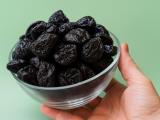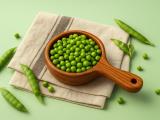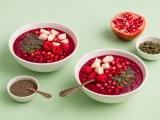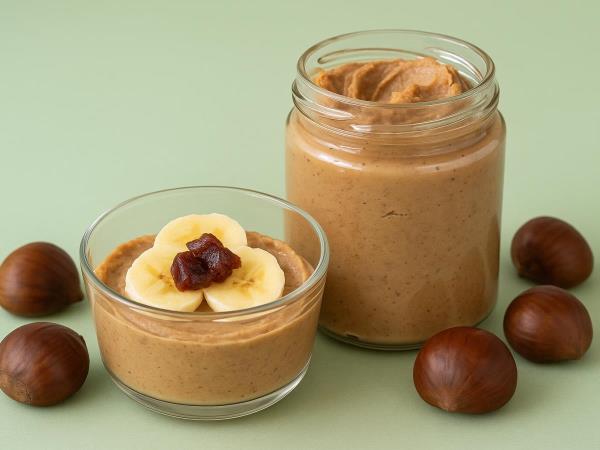Today, we roast, boil, sometimes even fry chestnuts, and use them to make desserts. Interestingly, chestnuts have a very low fat content among nuts. This means fewer calories from fats, leaving more room for other beneficial nutrients.
Nutritional Value of Chestnuts
Here are the specific numbers:
- 100 grams of chestnuts contain approximately 206 calories of energy.
- Proteins (for muscle and cell building) are around 2.7 g per 100 g.
- Fats are very low - only about 1.9 g per 100 g.
- Carbohydrates: a mix of starch, sugars, and fibers, totaling around 44.5 g per 100 g.
- Fiber: (digestive aid promoting intestinal movement) about 4.3 g.
Additionally, chestnuts contain vitamins and minerals: potassium, magnesium, copper, manganese, as well as vitamin C and some B vitamins. Interestingly, among nuts, chestnuts are the only ones that contain noticeable amounts of vitamin C. However, during cooking or baking, some of the vitamin C is lost due to heat sensitivity.
How Chestnuts Affect Health
- Strong Protection Through Antioxidants
Chestnuts contain compounds known as antioxidants. These substances defend our cells against harmful radicals (unstable molecules that can damage cells). Among these compounds are gallic acid, ellagic acid, tannins, and other polyphenols.
Studies have shown that chestnuts actually exhibit high antioxidant capacity, meaning they can effectively capture harmful substances.
Furthermore, in a study examining chestnut shells (typically discarded), researchers discovered a wealth of polyphenols, opening the possibility of utilizing chestnut waste beneficially (e.g., in teas, supplements). When we eat chestnuts (or spread made from them), we not only gain calories but also provide natural protection for our cells.
- Support for the Heart and Blood Vessels
Chestnuts are rich in potassium, a mineral that helps regulate blood pressure, crucial for heart health. Additionally, antioxidants prevent the oxidation of bad cholesterol (a process where cholesterol becomes harmful). Thus, regular consumption of chestnuts can contribute to reducing the risk of cardiovascular diseases.
- Digestion and Satiety
The fiber in chestnuts aids in bloating in your digestive system and helps food move smoothly, preventing constipation and regulating blood cholesterol levels.
Since fiber prolongs digestion time, it also creates a feeling of fullness, helping individuals not get full too quickly or reach for snacks frequently after meals. This is useful for weight control.
- Blood Sugar
For people looking to control their sugar levels, chestnuts are very interesting. Although rich in carbohydrates, they release sugars slowly, meaning they do not cause a rapid spike in blood sugar, helping regulate insulin levels.
Research shows that antioxidants in chestnuts (e.g., gallic and ellagic acid) can positively influence cell sensitivity to insulin.
Why Chestnuts are Suitable as Folk Medicine
In traditional medicine worldwide, such as in Portugal, chestnuts have been used to aid in digestive issues (nausea, slow digestion), and children were often prescribed it in a simple form (cooked).
Since chestnuts do not contain gluten (a protein found in wheat, rye, barley) and are more digestible, they are suitable for people with celiac disease or those sensitive to gluten.
Also, in inflammations (body responses to injuries or invaders) and oxidative stress (excess free radicals), chestnuts can soothe or alleviate damage through the action of their antioxidants. Studies have shown anti-inflammatory properties particularly in chestnut leaves and bark.
Of course, chestnuts are not a miraculous cure and not a substitute for treatment, but a very accessible natural supplement that can help maintain health.
Recipe for Homemade Chestnut Spread
Now to the practical part, how to turn a few chestnuts into a delicious, healthy, and homemade spread.
Ingredients:
- 100 g peeled, cooked chestnuts (without shells)
- 50–70 g rice milk (you can use other plant-based milk)
- 2 tablespoons of honey
- 20 g flaxseed oil
- A bit of cinnamon or a piece of vanilla
Preparation:
In a pan, place the chestnuts, pour rice milk over them, add cinnamon or vanilla. Then cook on low heat for about 10 minutes until the chestnuts soften. Remove from heat and mash the chestnuts with a fork. Add honey and flaxseed oil, then blend everything with an immersion blender until a creamy mixture forms.
Serve the spread with whole-grain bread or as part of breakfast, sandwiches, or pastries.
This is a simple, quick, and cost-effective spread that doesn't require expensive ingredients or complicated procedures.
Potential Limitations and Warnings
Vitamin C is lost during cooking or baking, so the spread won't have as much vitamin C as raw chestnuts, although some will remain. The amount of sugar is not problematic, as it provides many other positive effects (of course, moderation is key). Then there are allergies. If you are allergic to nuts or certain plants, be cautious with this spread as well.
Chestnuts are not the solution for serious illnesses. They are merely a support and not a replacement for treatment. The spread can serve as a healthy meal, a sweet touch to breakfast, providing fiber, minerals, and antioxidants. By using shells or other parts (in the form of tea), you can get even more from chestnuts.
It's worth following these tips:
- When roasting chestnuts, make a small incision (a tiny cross on the shell) to prevent them from bursting during roasting.
- If you have a larger quantity of chestnuts, cook more and store them in the freezer, where they can last for several months.
- When mixing with honey, use it in moderation. Often one tablespoon is sufficient.
- You can mix chestnuts with yogurt, on pancakes, in oatmeal. The possibilities are endless...
Start Your Day with Nature
Breakfast with chestnut spread is not only romantic but also thoughtful. With a little effort and homemade ingredients, you have a meal that provides you with energy, fiber, minerals, and antioxidants.
By appreciating what grows around you, you'll realize that you don't always need to search for expensive superfoods from distant lands. Sometimes, all you need to do is look under the leafy canopies of chestnut trees and indulge in something simple yet powerful.









 Would you like to be informed about news on the website?
Would you like to be informed about news on the website?

